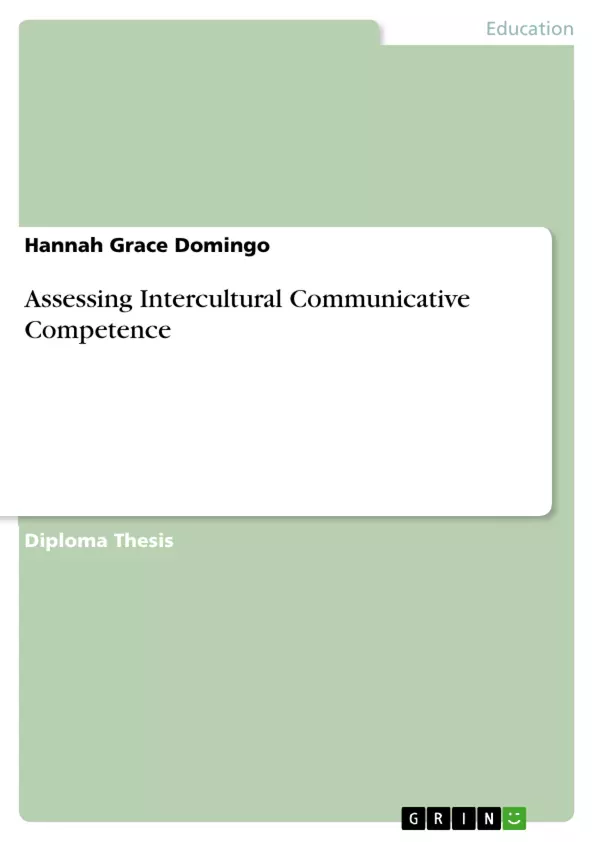The study was interrelated to the researcher’s field and background experience for this was about teaching and assessing intercultural communicative competence. The focus of the study was part of communication skills specifically "Interactive English" which was one of the subject taken by the researcher. The study provided sufficient information for this was only focused on assessing intercultural communicative competence among selected Grade 4 learners.
The results that were obtained from this study will contribute updated and enhanced discoveries and notions regarding assessing intercultural communicative competence.
Inhaltsverzeichnis (Table of Contents)
- Chapter I.
- Introduction
- Background of the Study
- Related Literature
- Conceptual Framework
- Research Paradigm
- Statement of the Problem
- Significance of the Study
- Scope and Delimitations of the Study
- Definition of Terms
- Chapter II.
- Methodology
- Research Design
- Population and Sampling
- Research Instrument
- Data Gathering Procedure
- Data Analysis
- Chapter III.
- Results
- Demographic Profile of the Pupils
- Intercultural Communicative Competence of the Pupils through Themed Writing
- Teaching strategies of Teacher
- Subject-related Strategies
- Descriptive Correlation between teaching strategies and competency among students
- Chapter IV.
- Discussion
- Conclusions
- Recommendations
Zielsetzung und Themenschwerpunkte (Objectives and Key Themes)
This study aims to assess intercultural communicative competence among selected elementary students. The researcher believes that intercultural communicative competence can affect student performance, particularly in communication situations where cultural differences might create challenges. The study explores the relationship between teaching strategies and intercultural communicative competence, focusing on the development of communication skills in a diverse classroom setting.
- The importance of intercultural communicative competence in modern education and a diverse society.
- The impact of cultural differences on communication and learning in the classroom.
- The role of teaching strategies in developing intercultural communicative competence.
- The relationship between teaching strategies and student performance in communication.
- The need to cultivate intercultural communicative competence to prepare students for a globalized world.
Zusammenfassung der Kapitel (Chapter Summaries)
Chapter I: This chapter provides an introduction to the study, outlining the background of the study, the significance of intercultural communicative competence, the research problem, and the scope of the research. It also defines key terms and presents a conceptual framework for the study.
Chapter II: This chapter delves into the methodology used in the study, covering the research design, population and sampling, research instrument, data gathering procedure, and data analysis techniques.
Chapter III: This chapter presents the results of the study, including demographic data of the participating students, their intercultural communicative competence as assessed through themed writing, teaching strategies employed by the teacher, and the correlation between teaching strategies and student competency.
Schlüsselwörter (Keywords)
This study focuses on intercultural communicative competence, teaching strategies, cultural diversity, communication skills, and student performance in the context of elementary education. The study aims to understand the relationship between teaching strategies and the development of intercultural communicative competence among students.
- Citation du texte
- Hannah Grace Domingo (Auteur), 2018, Assessing Intercultural Communicative Competence, Munich, GRIN Verlag, https://www.grin.com/document/456073



